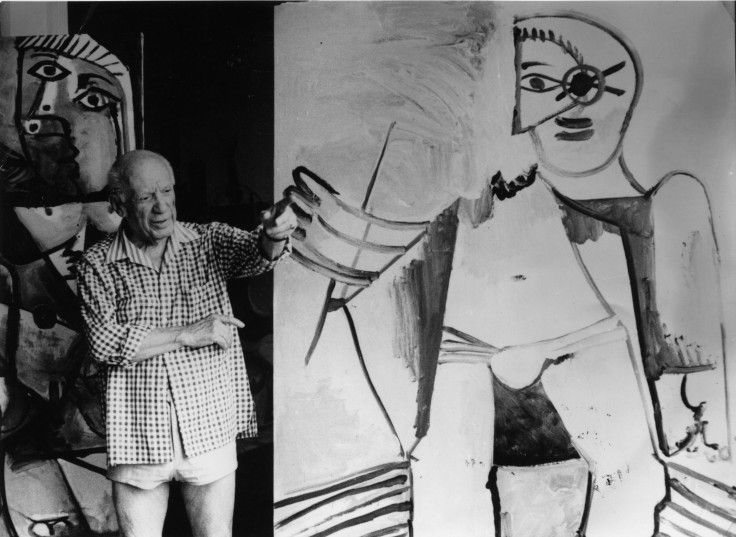Hidden Painting Discovered Under Picasso’s Artwork By X-Ray Scanning Technique

Researchers in the United States have discovered a painting hidden under the famous “The Crouching Beggar” (La Misereuse Accroupie) artwork by Pablo Picasso.
According to a report by the Guardian, researchers used a non-invasive imagine technique to inspect the Picasso painting which resulted in them finding a landscape painting hidden underneath it. The new study also provided more information on certain hidden features discovered in the painting earlier.
Marc Walton of Northwestern University, who presented the study at a meeting of the American Association for the Advancement of Science in Texas on Saturday, said, “This is where technology allows us to get into the mind of the artist, so we can actually understand the creative process of Picasso and how he actually started producing this work of art.”
When an x-ray image — also known as x-radiograph — of the Picasso painting was taken for a background research, the gallery team of the Art Gallery of Ontario, Canada — where the painting is now kept — found the hidden landscape.
In order to further delve into the subject, the gallery team was joined by researchers from Northwester University, Illinois. The researchers inspected the distribution of the chemical components found in various pigments all over the canvas by using a technique called x-ray fluorescence.
Walton said, referring to the technique used, “This gives us a little bit better sensibility about how this layered structure has developed, because some pigments are only in one layer and not another.”
Information gathered from the x-ray radiographs along with x-ray fluorescence revealed the fact that Picasso in his painting adopted the shapes which were present in the landscape painting, the report said.
“[Picasso] used the landscape as inspiration for the shape of the woman,” Walton said. “The hills that were painted in the background become the contours of her back.”
According to a report by BBC, Kenneth Brummel, assistant curator of modern art at the Art Gallery of Ontario, Canada, said he was “excited” when he got to know that a painting was hidden under Picasso’s artwork.
Brummel said, “It helps to date the painting and it also helps to determine where the painting was made.”
“But it also gives a sense of the artists with whom the painter was engaging. And these insights help us ask new, more interesting and scientifically more accurate questions regarding an artist, their process and how they arrived at the forms that we see on the surface of a painting,” added Brummel.
An interesting aspect of the landscape painting was that it was turned 90 degrees. The outline of the hills in the landscape painting became the backside of the crouching woman in Picasso’s artwork. The shape and form of the woman in Picasso’s work resembled the map of the countryside of Catalan.
Francesca Casadio from Chicago Center for Scientific Studies in the Arts in Northwestern University , who was one of leaders of the project, stated she hoped that a more wider use of the x-ray fluorescence scanning systems would increase the chances of being able to understand artworks better.
“Many more paintings are waiting to tell their secrets and with our scanning system we can help them talk to us more,” said Casadio.
However, the question still remained as to who painted the landscape. Initial suggestions stated that it might be the work of Joaquín Torres-García, an Uruguayan/Spanish artist, but the claim was dismissed because curators believed the landscape was of an actual area in Barcelona named the Parc del Laberint d’Horta, the Guardian reported.
Brummel said, “We know that Santiago Rusiñol, the leader of the Catalan modernisme movement, painted this site, and we believe other younger Catalan painters would have painted this site too.”
Dr. Nicola Ashmore of University of Brighton, England, who was engaged in researching another painting of Picasso named "Guernica" said, “This new discovery presents some fascinating findings with regards to Picasso’s painting practices of working on used canvases — finding inspiration from the forms and composition of the paintings worked into the canvas that lie beneath La Misereuse.”
“The application of new technologies within art history is contributing to the formation of an archaeology for each painting it is applied to,” added Ashmore.
© Copyright IBTimes 2024. All rights reserved.






















